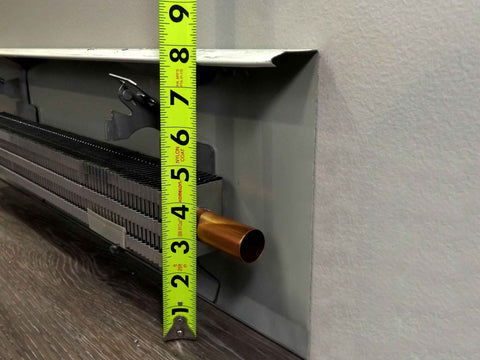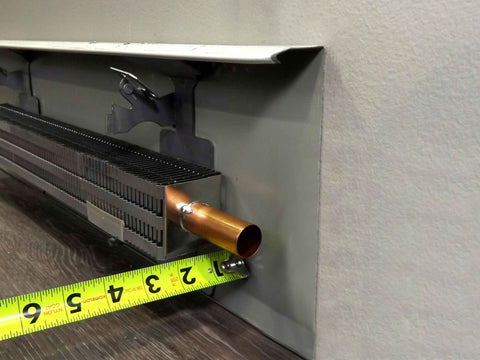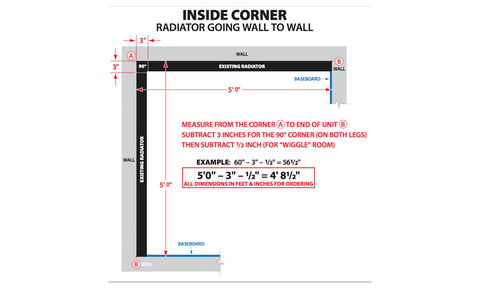Heater covers often go unnoticed until they start showing dents, rust, or outdated styles that drag down the appearance of a room. Homeowners and property managers face the same challenge: they must choose a replacement material that delivers durability, safety, and long-lasting visual appeal.
The decision usually comes down to steel or aluminum—two strong but very different metals. Choosing wisely saves time, reduces maintenance, and ensures a polished look that complements any space.
When you understand the performance and characteristics of each option, you avoid costly mistakes and unnecessary replacements. Our expert guide explores the best material for heater covers, explains their practical differences, and shows why steel heater covers often make the most reliable choice.
Understanding the Core Qualities of Steel and Aluminum
Steel and aluminum may both qualify as sturdy metals, but they behave differently in everyday use. Steel heater covers deliver strength and resist impacts, which helps them avoid bending or warping if someone accidentally kicks them.
Their heavier construction keeps them firmly in place without rattling or shifting. Powder-coated finishes protect against scratches and moisture, which allows steel to maintain its crisp appearance for years.
Many homeowners and property managers value aluminum for its lightweight design. Installing or moving aluminum covers requires less effort, which can help managers handle multiple units with ease.
Aluminum naturally resists rust, so it performs well in humid environments. However, its light frame bends more easily, and dents show quickly once they occur. In spaces with high foot traffic or busy households, this softness often leads to more frequent replacements.
When homeowners and managers understand these differences, they create a solid foundation for making a smart purchase. By weighing strength, weight, and appearance, you can match the right material to your space’s unique needs.
It also helps to consider who will interact with the covers most often—children, tenants, or maintenance staff—since durability needs can shift depending on how much daily wear and tear the heaters experience.
Long-Term Durability and Maintenance Considerations
When choosing heater covers, homeowners typically prioritize material durability. Steel heater covers have earned trust by staying strong and reliable for decades with little upkeep. Their heavier gauge withstands everyday bumps and resists bending, which means they protect baseboard heaters and maintain a sharp, well-kept look.
The powder-coated surface prevents chips and makes cleaning simple with just a quick wipe. Property managers appreciate steel because fewer maintenance calls save tenants from disruption and reduce expenses.
Aluminum resists rust, making it a better choice in damp areas like bathrooms, basements, and coastal homes. Still, its light frame dents and scratches quickly. Damage prevents the cover from returning to its original condition, leaving visible flaws that stand out. Replacing dented aluminum covers costs more over time, even if the first purchase feels budget-friendly.
When you measure long-term value, steel lasts while aluminum sacrifices its durability for lightweight and corrosion resistance. Homeowners who want to install baseboard covers once and enjoy reliable performance for many years usually choose steel.
The higher initial cost pays off because steel reduces maintenance issues, keeps rooms looking sharp, and reliably protects the heating system. For property managers, this reliability means fewer emergency replacements, less time coordinating maintenance crews, and fewer complaints from tenants.
Safety, Style, and Everyday Performance
Families with children, pets, or elderly residents need heater covers that feel safe. Steel heater covers stay firmly in place and resist tipping or bending under pressure, which lowers the risk of accidents.
Their rigid design reduces the chance that sharp edges could harm someone. Powder-coated steel surfaces stay cool to the touch during normal use, which gives families extra peace of mind.
Steel heater covers also look clean and modern in both traditional and contemporary interiors. Their solid weight makes a space feel well-built and permanent, which helps property managers attract quality tenants.
Aluminum covers provide a slimmer profile and lighter build, which some homeowners like for quick DIY updates. They handle moisture better, making them ideal for laundry rooms or kitchens.
Yet the thin material feels less substantial and shows damage more easily. In high-use spaces, steel keeps its structure and appearance longer. Here are some key advantages of steel heater covers:
- - Strong resistance to dents and bending
- - Secure fit that stays in place without rattling
- - Powder-coated finish that prevents scratches and stains
- - Lasting strength with minimal upkeep
- - A polished look that adds value to every room
Beyond these points, steel covers often blend seamlessly with a room’s trim or baseboards, making them feel like part of the home rather than a simple add-on. That design advantage helps properties stand out during showings, open houses, or rental viewings, where first impressions matter most.
Cost, Value, and the Practical Side of Ownership
Price often weighs heavily in a homeowner’s or property manager’s decision. Aluminum heater covers usually cost less up front. The lower purchase price looks attractive, especially for larger properties where managers must update multiple units at once. However, frequent dents, scratches, and misalignments quickly reduce their value.
Steel heater covers often cost more initially, but that higher price balances out because they last longer. Their strong construction protects the heating unit and keeps the property looking polished. Property managers save money with fewer service calls and fewer complaints. Homeowners gain peace of mind because they don’t face the same repairs year after year.
The value of heater covers doesn’t stop at the purchase price. A durable design saves time on maintenance and gives you lasting confidence in your choice. They prevent frustration, preserve appearance, and create long-term savings, which makes them the smarter choice for most homeowners and property managers.
Making the Right Choice for Your Space
When choosing between steel and aluminum heater covers, your priorities should guide the decision. Aluminum works well in damp environments and suits homeowners who want a quick, lightweight installation.
It suits areas with low traffic or those with tight budgets. Steel, however, performs better, lasts longer, and offers greater value. It stays strong, keeps families safe, and delivers a style that continues to look sharp in both residential and rental properties.
At the end of the day, whether steel or aluminum is the best material for heater covers depends on how much you value strength, stability, and style. If you want a solution that lasts, steel delivers every time.
That’s why EZ Snap Covers gives homeowners and property managers real confidence. We sell replacement baseboard covers made of thick galvanized steel that are easy to install and can handle the daily wear that cheaper options can’t. Upgrade today with EZ Snap Covers and enjoy dependable performance without the hassle.























